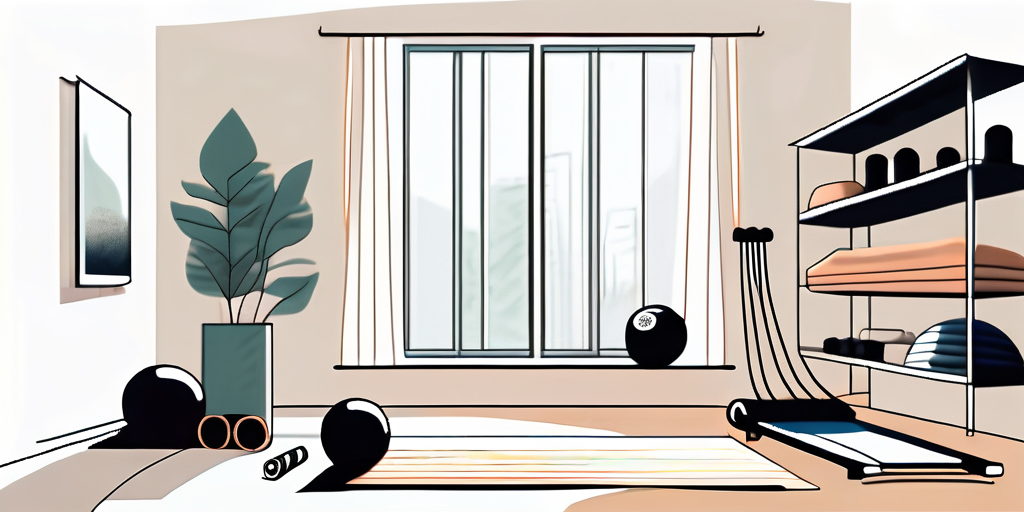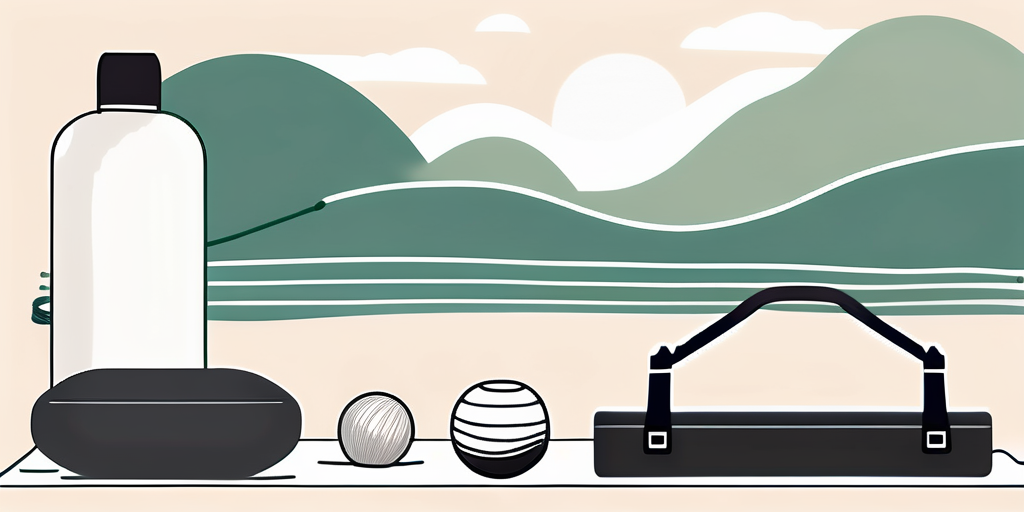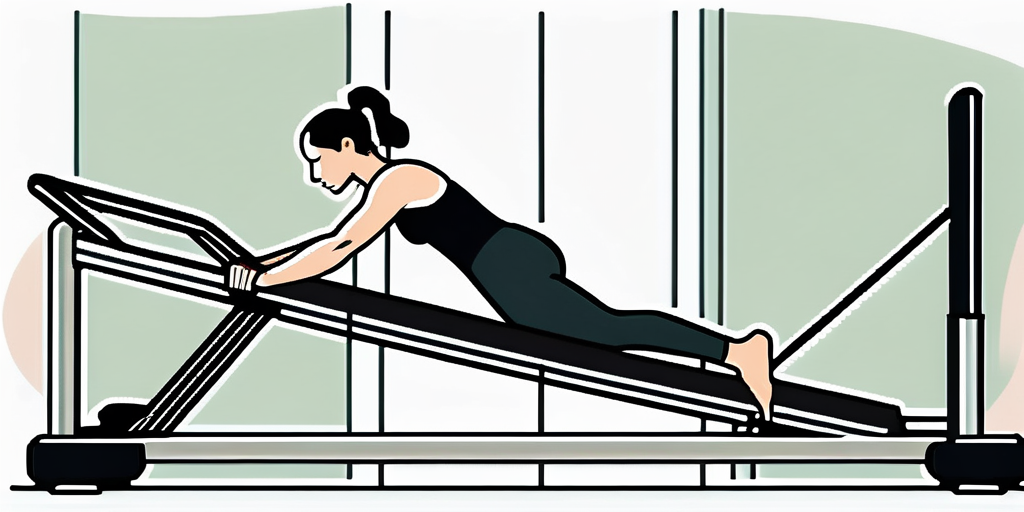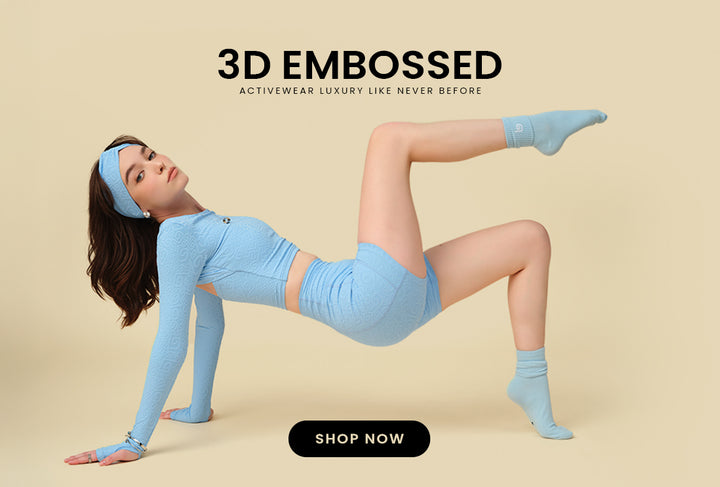Pilates is a popular exercise method that focuses on core strength, flexibility, and overall body conditioning. Originally developed in the early 20th century by Joseph Pilates, this exercise system has gained widespread recognition for its ability to improve posture, enhance body awareness, and promote overall physical wellbeing. In this ultimate guide, we will delve into the fundamentals of Pilates, explore the benefits it offers for health and fitness, provide practical tips for setting up your home Pilates studio, introduce essential exercises for beginners, and even delve into advanced techniques to challenge and expand your practice. Whether you're a Pilates newbie or a seasoned practitioner, this guide will provide you with all the information you need to enjoy the benefits of Pilates in the comfort of your own home.
Understanding the Basics of Pilates
The History and Principles of Pilates
Before diving into the exercises, it's essential to grasp the historical background and principles that underpin the Pilates method. Joseph Pilates developed this exercise system in the 1920s as a way to rehabilitate injured soldiers.
During World War I, Joseph Pilates was interned in a camp where he worked as a nurse. It was during this time that he began experimenting with different exercise techniques to help bedridden patients maintain their strength and mobility. Drawing inspiration from yoga, martial arts, and gymnastics, Pilates developed a series of exercises that focused on controlled and precise movements.
With its focus on controlled and precise movements, Pilates aimed to improve physical strength, flexibility, and mental focus. Today, Pilates is enjoyed by people of all ages and fitness levels, and its principles of centering, concentration, control, precision, breath, and flow form the foundation of each exercise.
Centering is one of the key principles of Pilates. It involves finding and maintaining a strong and stable center of gravity, which is often referred to as the "powerhouse." By engaging the deep muscles of the abdomen and back, you can create a solid foundation for all movements.
Concentration is another vital principle of Pilates. Each exercise requires full mental focus and concentration to perform it correctly. By bringing awareness to your body and mind, you can ensure that each movement is executed with precision and control.
Control is an essential aspect of Pilates. Unlike other forms of exercise that rely on momentum, Pilates emphasizes slow and controlled movements. This deliberate approach allows you to maintain proper form and engage the targeted muscles effectively.
Precision is key in Pilates. Each movement is performed with meticulous attention to detail, ensuring that the correct muscles are targeted and engaged. By focusing on precision, you can maximize the effectiveness of each exercise and avoid unnecessary strain or injury.
Breath is an integral part of Pilates. The breath is used to facilitate movement, promote relaxation, and enhance body awareness. By coordinating your breath with each movement, you can create a sense of flow and rhythm in your practice.
Flow refers to the seamless transition between exercises in a Pilates routine. It emphasizes the smooth and continuous movement of the body, promoting a sense of grace and fluidity. By maintaining a steady flow, you can maintain the integrity of each exercise and optimize its benefits.
By understanding this historical context and adhering to these principles, you can fully immerse yourself in the Pilates experience and reap its many benefits for your mind and body.
The Benefits of Pilates for Health and Fitness
Pilates offers an array of benefits that extend beyond physical fitness. Regular practice can help strengthen your core muscles, resulting in improved posture and stability.
By focusing on proper alignment and engaging the deep muscles of the abdomen and back, Pilates can alleviate back pain and enhance overall spinal health. The controlled movements and emphasis on core strength help to support the spine and reduce strain on the back.
Furthermore, Pilates promotes flexibility by lengthening and elongating muscles, improving range of motion in both everyday activities and more specialized movements. This increased flexibility can help prevent injuries and improve athletic performance in other sports or physical activities.
Pilates also provides mental benefits. Its emphasis on breath control and concentration helps to reduce stress, increase mindfulness, and improve mental clarity. By bringing awareness to your body and mind during each exercise, you can cultivate a sense of inner balance and tranquility.
Additionally, Pilates can improve overall body awareness and coordination. By focusing on precise movements and engaging specific muscle groups, you can develop a greater sense of control and coordination in your body.
Ultimately, Pilates offers a holistic approach to fitness, strengthening not just the body but also the mind and spirit. By incorporating the principles of Pilates into your exercise routine, you can experience improved physical fitness, enhanced mental well-being, and a greater sense of overall vitality.
Setting Up Your Home Pilates Studio
Setting up a home Pilates studio is an exciting endeavor that allows you to practice this beneficial exercise method in the comfort of your own space. Whether you're a beginner or an experienced practitioner, having a dedicated area for your Pilates practice can enhance your experience and help you stay consistent with your workouts.

Choosing the Right Equipment
A crucial aspect of practicing Pilates at home is selecting the right equipment. While a traditional Pilates studio may boast elaborate machines and equipment, you can achieve excellent results with a few key essentials.
A Pilates mat is a must-have item, providing support and cushioning for floor exercises. Look for a high-quality mat with a non-slip surface to ensure maximum comfort and stability. This will allow you to perform a wide range of exercises that focus on strength, flexibility, and control.
For added variety and resistance, consider investing in small props such as resistance bands, Pilates balls, and foam rollers. These versatile tools can intensify your workouts and target specific muscle groups. Resistance bands, for example, can provide additional resistance to challenge your muscles, while Pilates balls can help improve balance and stability.
Remember, though, that while equipment can enhance your Pilates practice, many exercises can be performed using nothing but your body weight. So, even if you're on a budget, you can still enjoy the benefits of Pilates.
Creating a Comfortable and Motivating Space
Your home Pilates studio should be a space that inspires and motivates you to practice regularly. Choose a dedicated area in your home where you can spread out your mat and move freely. Ideally, this space should have good natural light and adequate ventilation to create a pleasant and energizing atmosphere.
Decorate the area with soothing colors and add elements that spark joy, such as plants or motivational quotes. These small touches can make a big difference in creating a positive and inviting environment. Additionally, consider playing soft, calming music to enhance relaxation and focus during your Pilates sessions.
Make it a sanctuary where you can escape the noise of daily life and focus solely on your Pilates practice. By creating a space that is separate from other activities, you can cultivate a sense of mindfulness and concentration, allowing you to fully immerse yourself in the practice.
Remember, the key is to create a space that makes you feel comfortable, inspired, and excited to engage in your Pilates routine consistently. When you have a space that you enjoy being in, you'll find it easier to stay motivated and committed to your Pilates journey.
Essential Pilates Exercises for Beginners
Core Strengthening Moves
A strong core is the foundation of any Pilates practice. These exercises will engage your deep abdominal muscles and help you develop a stable and supportive core.

- The Hundred: Lie on your back, lift your head and shoulders off the mat, engage your abs, and pump your arms vigorously as you inhale for five counts and exhale for five counts. Repeat ten times.
- Roll Up: Lie on your back, extend your legs, and reach your arms overhead. Slowly curl your spine up, reaching forward to touch your toes, then roll back down with control. Repeat five times.
- Single Leg Stretch: Lie on your back with both knees bent, one knee pulled into your chest, and the other leg extended forward at a 45-degree angle. Switch legs while keeping your torso stable. Repeat ten times on each side.
Flexibility and Balance Exercises
Pilates also places great emphasis on flexibility and balance, helping you move with grace and ease. These exercises will improve your flexibility and challenge your sense of balance.
- Swan Dive: Lie on your stomach with your hands under your shoulders, lift your upper body off the mat, and extend your arms forward while simultaneously lifting your legs. Hold for a few breaths, then lower back down. Repeat five times.
- Tree Pose: Stand tall with your feet together. Place the sole of your left foot against the inside of your right thigh and extend your arms overhead. Find your balance and hold for a few breaths. Repeat on the other side.
- Side Leg Lifts: Lie on your side, supporting your upper body with your elbow. Lift your top leg while keeping it straight and in line with your body. Pause at the top, then lower back down. Repeat ten times on each side.
Advanced Pilates Techniques to Try
Power Pilates for Strength and Endurance
Once you've built a solid foundation with the beginner exercises, it's time to challenge yourself with more advanced techniques. Power Pilates focuses on increased resistance and intensity to build strength and endurance.

One example of a power Pilates exercise is the Teaser. Sit on your mat with your legs extended and lift your torso off the mat, reaching your arms forward at shoulder height. Balance on your sit bones and extend your legs, creating a V shape with your body. Hold for a few breaths, then slowly lower back down.
As you progress, you can explore more power Pilates exercises and incorporate them into your routine to continue pushing your physical limits.
Pilates for Injury Recovery and Prevention
Pilates is renowned for its therapeutic benefits, making it an excellent tool for injury recovery and prevention. Many physical therapists and healthcare professionals integrate Pilates into their rehabilitation programs to enhance mobility, strength, and overall healing.
After consulting with your healthcare provider, you can tailor your Pilates routine to address specific areas of concern or work on rehabilitating an injury. With its low-impact nature and focus on alignment and controlled movements, Pilates allows you to rebuild strength and restore balance gradually.
By using Pilates as a proactive approach to injury prevention and recovery, you can ensure that your body remains strong and resilient.
Incorporating Pilates into Your Daily Routine
Creating a Consistent Pilates Schedule
If you want to reap the full benefits of Pilates, consistency is key. Creating a regular Pilates schedule will help you develop discipline and make your practice a habitual part of your day.
Consider starting with short sessions, gradually increasing the duration and intensity as you become more comfortable. Aim for at least three to five Pilates sessions per week, each lasting around 30 minutes to an hour.
Choose a time that suits your schedule and stick to it, treating Pilates as an important appointment with yourself. By committing to a consistent practice, you'll start to notice improvements in your strength, flexibility, and overall wellbeing.
Balancing Pilates with Other Forms of Exercise
Pilates can be an excellent standalone exercise routine, but it can also complement other forms of physical activity. By combining Pilates with cardiovascular exercises like running, cycling, or swimming, you can create a well-rounded fitness regimen.
Alternate your Pilates sessions with other exercises to engage different muscle groups and prevent boredom. Listen to your body and find a balance that works for you, ensuring that you allow for adequate rest and recovery.
Remember, Pilates should enhance your overall fitness journey, supporting and challenging your body in harmony with your other physical activities.
By following this ultimate guide to Pilates at home, you can embark on a fulfilling and transformative journey. Whether you're seeking improved core strength, enhanced flexibility, or a sense of inner harmony, Pilates has something to offer everyone. Embrace the principles, set up your home studio, and embark on a regular practice. With consistency and dedication, you'll unleash the full potential of Pilates and discover newfound physical and mental wellbeing.




